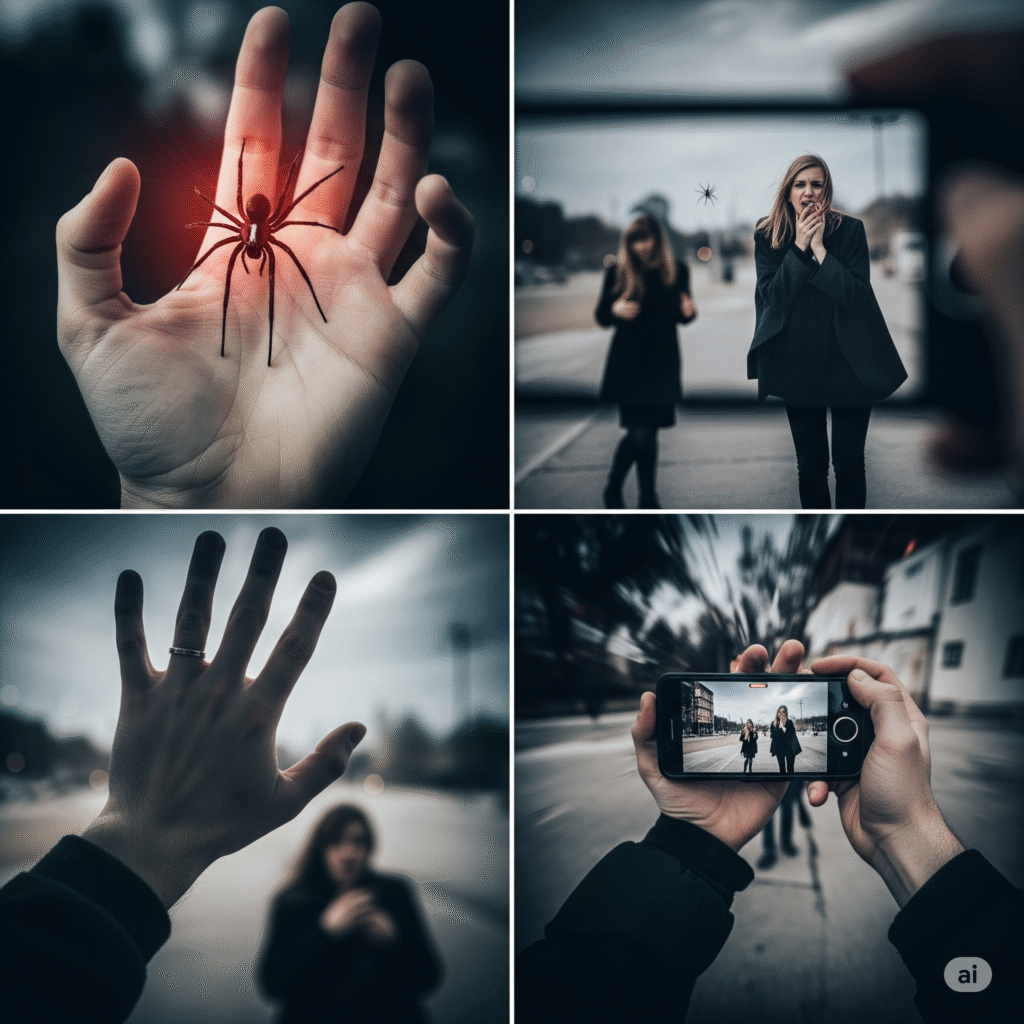What Are Phobias?
Phobias are intense, irrational fears of specific objects, situations, or activities that provoke immediate anxiety and often result in avoidance behavior.
Unlike everyday fears, phobias:
- Are out of proportion to the actual threat
- Cause significant distress
- Interfere with daily functioning
According to the DSM-5-TR (2022), phobias are categorized as anxiety disorders. Around 9-10% of adults in the U.S. are estimated to experience a specific phobia each year.
Types of Phobias
Phobias are generally divided into three main categories:
- Specific Phobias
- Social Anxiety Disorder (Social Phobia)
- Agoraphobia
Let’s explore each in more detail.
Specific Phobias
Specific phobias involve intense fear of a particular object or situation. The fear is immediate and often leads to avoidance.
Common Types of Specific Phobias
- Animal Phobias: Spiders (arachnophobia), snakes, dogs, insects
- Natural Environment Phobias: Heights (acrophobia), storms, water
- Blood-Injection-Injury Phobia: Fear of needles, medical procedures, or seeing blood
- Situational Phobias: Flying, elevators, enclosed spaces (claustrophobia)
- Other Phobias: Loud noises, choking, vomiting
Symptoms can include:
- Rapid heartbeat
- Trembling
- Shortness of breath
- Nausea
- Dizziness
Specific phobias often begin in childhood or adolescence and can persist into adulthood if untreated.
Social Anxiety Disorder (Social Phobia)
Previously called social phobia, social anxiety disorder involves intense fear of social situations where a person may feel embarrassed, judged, or scrutinized.
Examples include:
- Public speaking
- Meeting new people
- Eating or drinking in public
- Using public restrooms
People with social anxiety may:
- Avoid social gatherings
- Experience physical symptoms like sweating, shaking, or blushing
- Feel extreme distress before, during, and after social situations
Social anxiety disorder usually emerges in the teenage years and can significantly affect relationships, work, and quality of life.
Agoraphobia
Agoraphobia is a fear of being in situations where escape might be difficult or help unavailable if panic-like symptoms occur.
People with agoraphobia may fear:
- Using public transportation
- Being in open or enclosed spaces
- Standing in line or being in crowds
- Leaving home alone
In severe cases, individuals become homebound.
Agoraphobia often develops alongside panic disorder, but it can also occur independently.
Causes and Risk Factors for Phobias
Phobias arise from a complex mix of factors:
- Genetics: A family history of anxiety disorders increases risk.
- Brain chemistry: Imbalances in brain chemicals involved in fear processing.
- Traumatic experiences: Childhood trauma or witnessing fearful events.
- Learned behavior: Observing others displaying fear can lead to phobia development.
Not everyone exposed to a fear-inducing event develops a phobia—personal vulnerability varies.
Treatment for Phobias
The good news: Phobias are highly treatable. Common approaches include:
Cognitive Behavioral Therapy (CBT)
- Helps challenge irrational fears
- Teaches coping strategies
Exposure Therapy
- Gradual, controlled exposure to feared objects or situations
- Highly effective for specific phobias
Medication
- SSRIs or benzodiazepines may help for severe anxiety, especially in social anxiety disorder or agoraphobia.
Relaxation Techniques
- Mindfulness
- Deep breathing
- Progressive muscle relaxation
Seeking help early improves outcomes and reduces avoidance behaviors.
Living with Phobias
Living with phobias can be isolating and exhausting, but many people:
- Lead successful lives with proper treatment
- Learn to manage anxiety
- Benefit from support groups and therapy
Phobias don’t define a person—they’re manageable conditions.













